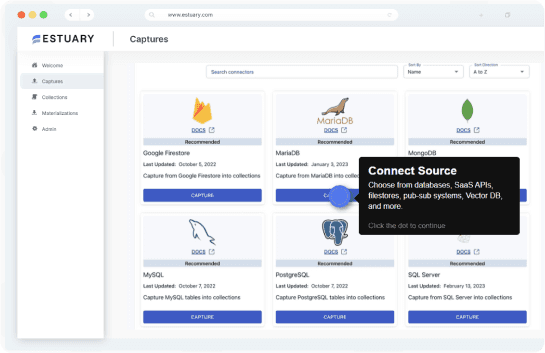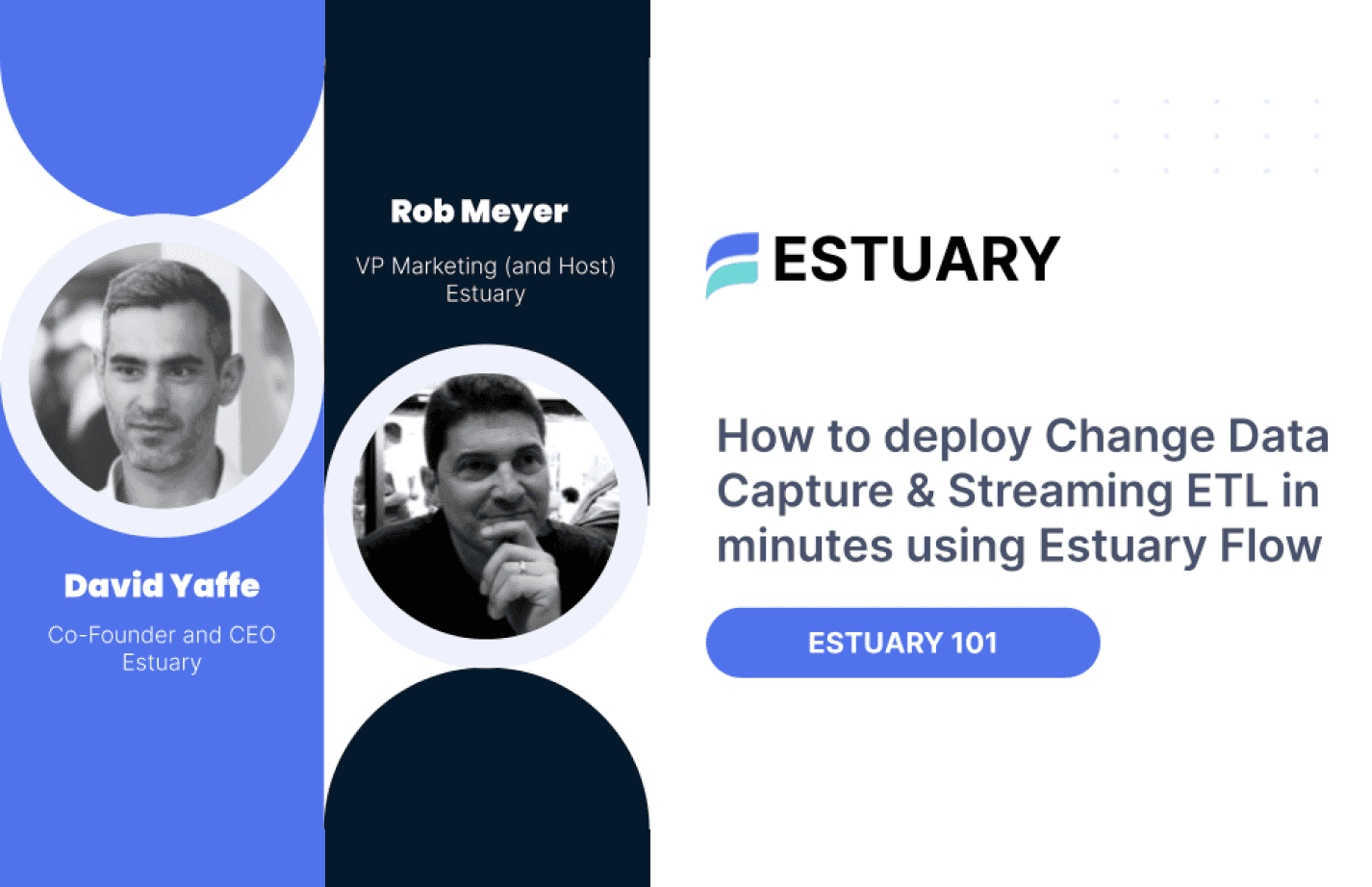AWS DMS VS Debezium + Kafka
Read this detailed 2025 comparison of AWS DMS vs Debezium + Kafka. Understand their key differences, core features, and pricing to choose the right platform for your data integration needs.
View all comparisons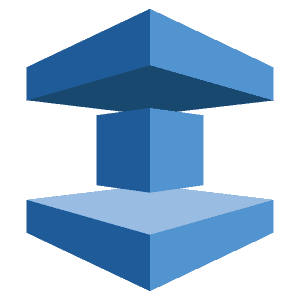
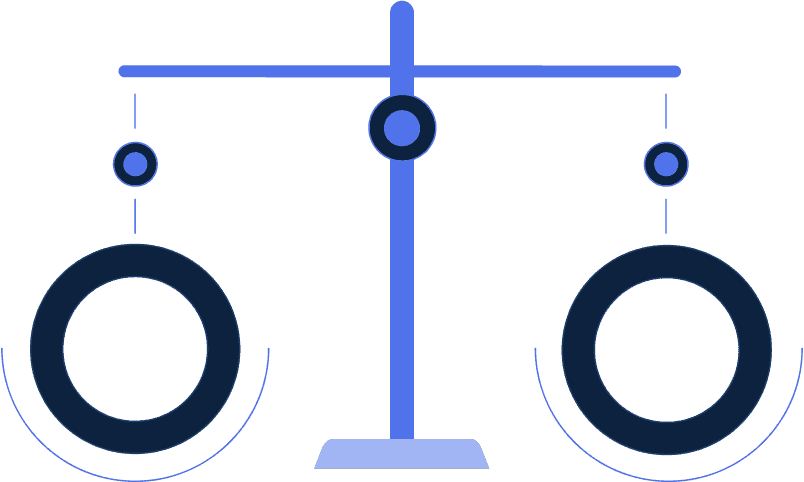

Introduction
Do you need to load a cloud data warehouse? Synchronize data in real-time across apps or databases? Support real-time analytics? Use generative AI?
This guide is designed to help you compare AWS DMS vs Debezium + Kafka across nearly 40 criteria for these use cases and more, and choose the best option for you based on your current and future needs.
Comparison Matrix: AWS DMS vs Debezium + Kafka vs Estuary
 |  |  | |||||||||||||||||||||||||||||||||||||||||||||||||||||
|---|---|---|---|---|---|---|---|---|---|---|---|---|---|---|---|---|---|---|---|---|---|---|---|---|---|---|---|---|---|---|---|---|---|---|---|---|---|---|---|---|---|---|---|---|---|---|---|---|---|---|---|---|---|---|---|
| |||||||||||||||||||||||||||||||||||||||||||||||||||||||
| |||||||||||||||||||||||||||||||||||||||||||||||||||||||
| |||||||||||||||||||||||||||||||||||||||||||||||||||||||
| |||||||||||||||||||||||||||||||||||||||||||||||||||||||
| |||||||||||||||||||||||||||||||||||||||||||||||||||||||
| |||||||||||||||||||||||||||||||||||||||||||||||||||||||

AWS DMS

AWS Database Migration Service (DMS) was introduced as a tool to help migrate legacy databases into AWS. While it supports full-load and CDC replication, DMS is not a modern integration platform. It lacks support for modern SaaS APIs, streaming destinations, and developer-friendly deployment models.
Pros
- Available in AWS: Works within AWS without provisioning servers.
- Basic CDC support: Handles incremental replication from supported databases.
Cons
- Not real-time: DMS is not a streaming system. Latency varies and is hard to monitor in production.
- No extensibility: No community ecosystem, no custom connectors, no plugin support.
- Operational overhead: Task failures are common and require manual troubleshooting. Configuration and credential management are fragile.
- Rigid delivery options: Cannot deliver to modern analytics stacks or streaming endpoints.
- Expensive at scale: Costs add up with replication instance hours, storage, and logging. Lacks predictability for long-term CDC jobs.
AWS DMS Pricing
Costs are based on replication instance size and duration (e.g., t3.medium ~$0.036/hr), plus storage and logs. Tasks that run continuously or process high volumes can become costly without offering the capabilities of modern platforms. There is no free tier, and pricing becomes opaque with additional monitoring and retries.
Debezium + Kafka
Debezium started within Red Hat following the release of Kafka, and Kafka Connect. It was inspired in part by Martin Kleppmann’s presentations on CDC and turning the database inside out.
Debezium is the open-source option for general-purpose replication, and it does many things right for replication, from scaling to incremental snapshots (make sure you use DDD-3 and not whole snapshotting). If you are committed to open source, have the specialized resources needed, and need to build your own pipeline infrastructure for scalability or other reasons, Debezium is a great choice.
Otherwise, think twice about using Debezium because it will be a big investment in specialized data engineering and admin resources. While the core CDC connectors are solid, you will need to build the rest of your data pipeline including:
- The many non-CDC source connectors you will eventually need. You can leverage all the Kafka Connect-based connectors to over 100 different sources and destinations. But they have a long list of limits (see confluent docs on limits).
- Data schema management and evolution - while the Kafka Schema Registry does support message-level schema evolution, the number of limitations on destinations and the translation from sources to message makes this much harder to manage.
- Kafka does not save your data indefinitely. There is no replay/backfilling service that manages previous snapshots and allows you to reuse them, or do time travel. You will need to build those services.
- Backfilling and CDC happens on the same topic. So if you need to redo a snapshot, all destinations will get it. If you want to change this behavior you need to have separate source connectors and topics for each destination, which adds costs and source loads.
- You will need to maintain your Kafka cluster(s), which is no small task.
If you are already invested in Kafka as your backbone, it does make good sense to evaluate Debezium.
Pros
- Real-Time CDC: Kafka + Debezium captures database changes in real-time.
- Flexibility: Debezium supports multiple databases and allows for flexible configuration options for filtering and handling database changes.
- Scalable Data Streams: Kafka’s distributed architecture ensures that even high-velocity data streams are processed efficiently and can scale horizontally.
Cons
- Complex Setup: Managing a self-hosted Kafka cluster alongside Debezium requires significant operational effort, including scaling, monitoring, and ensuring fault tolerance.
- At-Least-Once Delivery: Debezium guarantees at-least-once delivery, meaning duplicate records may need to be handled at the consumer level. This adds complexity to building exactly-once data pipelines.
- High Infrastructure Costs: Running a Kafka cluster and Debezium connectors, especially at scale, can require substantial infrastructure resources, making it more costly than other CDC alternatives.
Debezium + Kafka Pricing
Kafka itself is open-source and free to use, but the costs associated with deploying and maintaining a Kafka cluster can vary depending on cloud or on-premise infrastructure. Managed Kafka services such as Confluent Cloud can provide a more streamlined, albeit pricier, solution. Debezium is open-source, but operational costs come from the Kafka infrastructure and any associated storage, processing, and egress costs.
Estuary
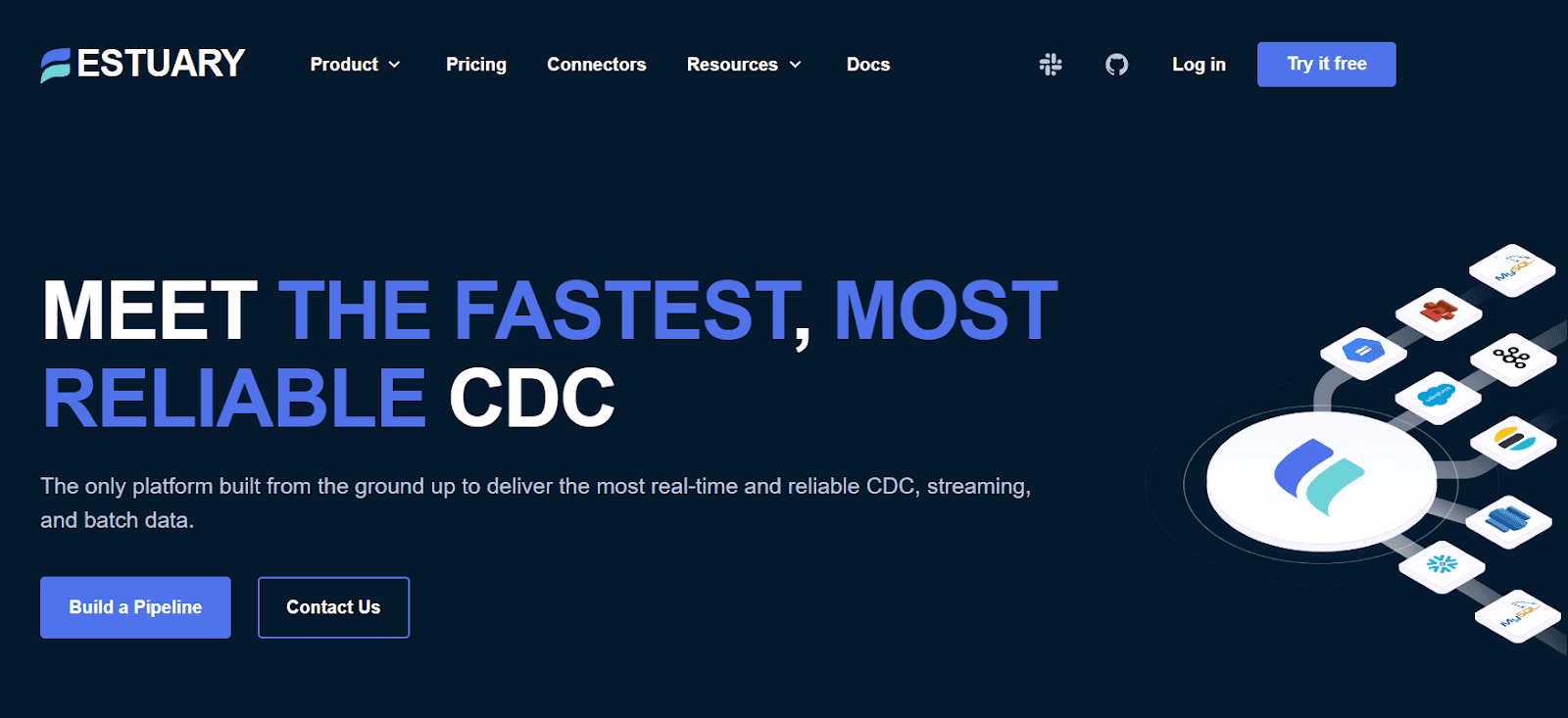
Estuary is the right time data platform that replaces fragmented data stacks with one dependable system for data movement. Instead of juggling separate tools for CDC, batch ELT, streaming, and app syncs, teams use Estuary to move data from databases, SaaS apps, files, and streams into warehouses, lakes, operational stores, and AI systems at the cadence they choose: sub second, near real time, or scheduled.
The company was founded in 2019, built on Gazette, a battle tested streaming storage layer that has powered high volume event workloads for years. That foundation lets Estuary mix CDC, streaming, and batch in a single catalog and gives customers exactly once delivery, deterministic recovery, and targeted backfills across all of their pipelines.
Unlike traditional ELT tools that focus on batch loads into a warehouse, Estuary stores every event in collections that can be reused for multiple destinations and use cases. Once a change is captured, it is written once to durable storage and then fanned out to any number of targets without reloading the source. This reduces load on primary systems, provides consistent history for analytics and AI, and makes it easy to replay or reprocess data when schemas or downstream models change.
Estuary can run as a multi tenant cloud service, as a private data plane inside the customer’s cloud, or in a BYOC model where the customer owns the infrastructure and Estuary manages the control plane. This gives security and compliance teams the control they expect from in house systems with the convenience of a managed platform.
Estuary also has broad packaged and custom connectivity, making it one of the top ETL tools. The platform ships with a growing set of high quality native connectors for databases, warehouses, lakes, queues, SaaS tools, and AI targets. Estuary also supports many open source connectors where needed, so teams can consolidate around one system while still covering niche sources and destinations. Customers consistently highlight predictable pricing, strong reliability, and partner level support as key reasons they choose Estuary instead of Fivetran, Airbyte, or DIY stacks.
Estuary Flow is highly rated on G2, with users highlighting its real-time capabilities and ease of use.
Pros
- Right time pipelines: Estuary lets you choose the cadence of each pipeline, from sub second streaming to periodic batch, so cost and freshness match the workload.
- One platform for all data movement: Handles CDC, batch loads, and streaming in one product, which reduces tool sprawl and simplifies operations.
- Dependable replication: Exactly once delivery, deterministic recovery, and targeted backfills keep pipelines stable even when sources or schemas change.
- Efficient CDC: Log based CDC captures inserts, updates, and deletes once and reuses them for many destinations, reducing load on operational databases.
- High scale architecture: Gazette and collections support large, continuous data streams with reliable throughput across multiple targets.
- Modern transforms: Supports SQL and TypeScript based transformations in motion, and integrates cleanly with dbt for warehouse side ELT.
- Flexible deployment choices: Available as cloud SaaS, private data plane, or BYOC, giving enterprises strong control over data residency and security.
- Predictable total cost of ownership: Transparent pricing based on data volume and connector instances avoids MAR based surprises and is easy to forecast.
- Fast time to value: A guided UI, CLI, and templates help most teams build their first dependable pipelines in hours instead of weeks.
- Partner level support: Customers report quick connector delivery, responsive troubleshooting, and SLAs that make Estuary feel like an extension of their team.
Cons
- On premises connectors: Estuary has 200+ native connectors and supports 500+ Airbyte, Meltano, and Stitch open source connectors. But if you need on-premises app or data warehouse connectivity, make sure you have all the connectivity you need.
- Graphical ETL: Estuary has been more focused on SQL and dbt than graphical transformations. While it does infer data types and convert between sources and targets, there is currently no graphical transformation UI.
Estuary Pricing
Of the various ELT and ETL vendors, Estuary is the lowest total cost option. Estuary only charges $0.50 per GB of data moved from each source or to each target, and $100 per connector per month. Rivery, the next lowest cost option, is the only other vendor that publishes pricing of 1 RPU per 100MB, which is $7.50 to $12.50 per GB depending on the plan you choose. Estuary becomes the lowest cost option by the time you reach the 10s of GB/month. By the time you reach 1TB a month Estuary is 10x lower cost than the rest.
How to choose the best option
For the most part, if you are interested in a cloud option, and the connectivity options exist, you may choose to evaluate Estuary.
Modern data pipeline: Estuary has the broadest support for schema evolution and modern DataOps.
Lowest latency: If low latency matters, Estuary will be the best option, especially at scale.
Highest data engineering productivity: Estuary is among the easiest to use, on par with the best ELT vendors. But it also has delivered up to 5x greater productivity than the alternatives.
Connectivity: If you're more concerned about cloud services, Estuary or another modern ELT vendor may be your best option. If you need more on-premises connectivity, you might consider more traditional ETL vendors.
Lowest cost: Estuary is the clear low-cost winner for medium and larger deployments.
Streaming support: Estuary has a modern approach to CDC that is built for reliability and scale, and great Kafka support as well. It's real-time CDC is arguably the best of all the options here. Some ETL vendors like Informatica and Talend also have real-time CDC. ELT-only vendors only support batch CDC.
Ultimately the best approach for evaluating your options is to identify your future and current needs for connectivity, key data integration features, and performance, scalability, reliability, and security needs, and use this information to a good short-term and long-term solution for you.
Related comparisons to AWS DMS
Related comparisons to Debezium + Kafka
Getting started with Estuary
Free account
Getting started with Estuary is simple. Sign up for a free account.
Sign upDocs
Make sure you read through the documentation, especially the get started section.
Learn moreCommunity
I highly recommend you also join the Slack community. It's the easiest way to get support while you're getting started.
Join Slack CommunityEstuary 101
I highly recommend you also join the Slack community. It's the easiest way to get support while you're getting started.
Watch


